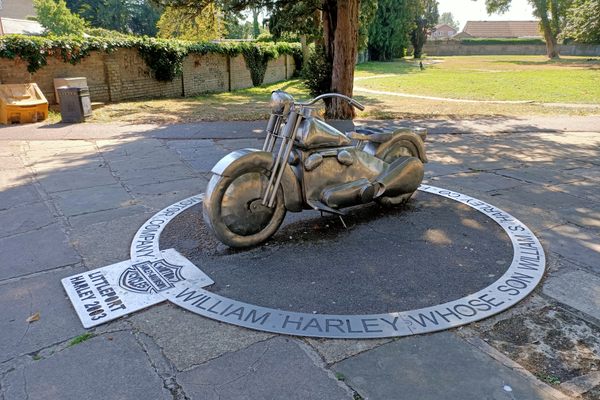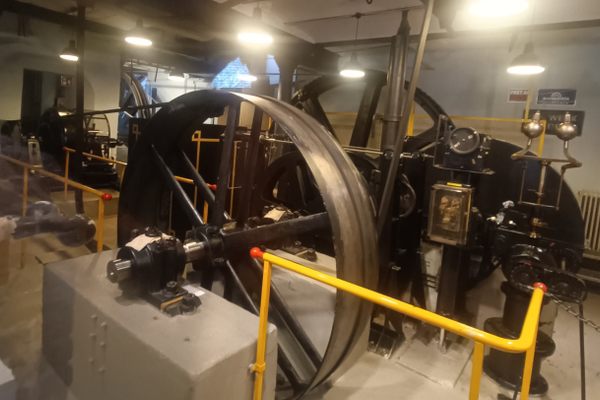The Denver Sluice Complex
This little-known hero has been protecting "The Fens" for close to 400 years, and now from its most powerful challenger yet: climate change.
In the East of England, 1,500 square miles of former marshland lies at or below sea level. The whole area, now known as the Fenland, is protected from inundation by the North Sea by The Denver Sluice Complex, an easily overlooked system of engineering marvels with a history stretching back to 1651.
Prior to the 1650s, much of Eastern England (particularly in the counties of Lincolnshire, Norfolk, Suffolk, and Cambridgeshire) was covered by a great muddy marsh and river delta formed by the outflow into the sea of the Great Ouse River System. In the mid-1650s, a team of venture capitalists (then referred to as Gentlemen Adventurers), hired a Dutch engineer to drain the swampland in order to create productive farmland out of the unused land. Despite stiff opposition and attempted sabotage by locals who made their living off of the eels and waterfowl in the marshes, the engineering project went ahead and the landscape was altered beyond recognition. River channels were straightened, new channels dug, levee banks piled high, and the land was drained.
In what can be considered the result of karma towards the Gentleman Adventurers, as soon as the marshes were drained, the land dried, then contracted, and then started to sink. The newly created farmland slowly began to sink farther and farther below sea level, until the entire Great Ouse River started to flow precariously through elevated channels, sometimes up to fifteen feet higher than the land below. To make matters worse, some of England’s most deadly tides occur around this area, with tides of 20 feet not being uncommon. As a result, building something to prevent the river channels from over-spilling and catastrophically flooding the land presented quite a necessary challenge to take on.
The answer to the challenge presented itself in the Denver Sluice Complex. Built in 1651 and currently run by the UK’s Environment Agency, the Denver Sluice Complex has been the seldom-praised hero of the Fenland area (“The Fens”) for close to 400 years. The Complex has been renovated often throughout its long history, but has existed in some shape or form for centuries.
At high tide, a series of sturdy gates, the oldest of which have been in use since 1834, are closed, and the water is forced to back up in the river channels until the tide falls below the river level. When the tide falls to a low enough level, the sluice gates are re-opened and the river is allowed to continue its flow out to sea. If the tides are especially high during times of storm surges, or if heavy rainfall has swollen the river levels more than usual, an area of animal grazing land at Welney—20 miles upstream of the Complex—is sacrificed to the waters as a temporary reservoir.
Without the Denver Sluice Complex, some of England’s most valuable and productive farmland would be lost to sea in a devastatingly short period of time—a twisted irony considering it was the desire for farmland that created the issue in the first place.
While the Complex has been a ginormous success overall, unfortunately for the “Fenlanders,” the sluice gates have failed in the past. The first time was in 1713, when the original sluice gate was destroyed by an exceptionally high tide. The second time was more recently, in 1953, when a storm surge burst through the gates and 380 square miles of the Fenland and other low lying areas were inundated, killing 307 people.
The gates have since been renovated to be even stronger, however new challenges are presenting themselves. As global climate change threatens to raise sea levels even higher and increase both the frequency of storm surges and the annual rainfall, the challenges faced by the Denver Sluice Complex to prevent the water from reclaiming the Fenland will become increasingly difficult. How much longer the centuries-old underdog can continue to save the day is anyone’s guess.
Know Before You Go
The sluice complex is west of the village of Denver, near Downham Market, off the A10 London - Kings Lynn Road.
There is parking and a picnic area between the two main sluices, and the complex is also on the Fen Rivers Way long distance path.
The structures are easily visible from the road which passes next to the sluices.


















Follow us on Twitter to get the latest on the world's hidden wonders.
Like us on Facebook to get the latest on the world's hidden wonders.
Follow us on Twitter Like us on Facebook